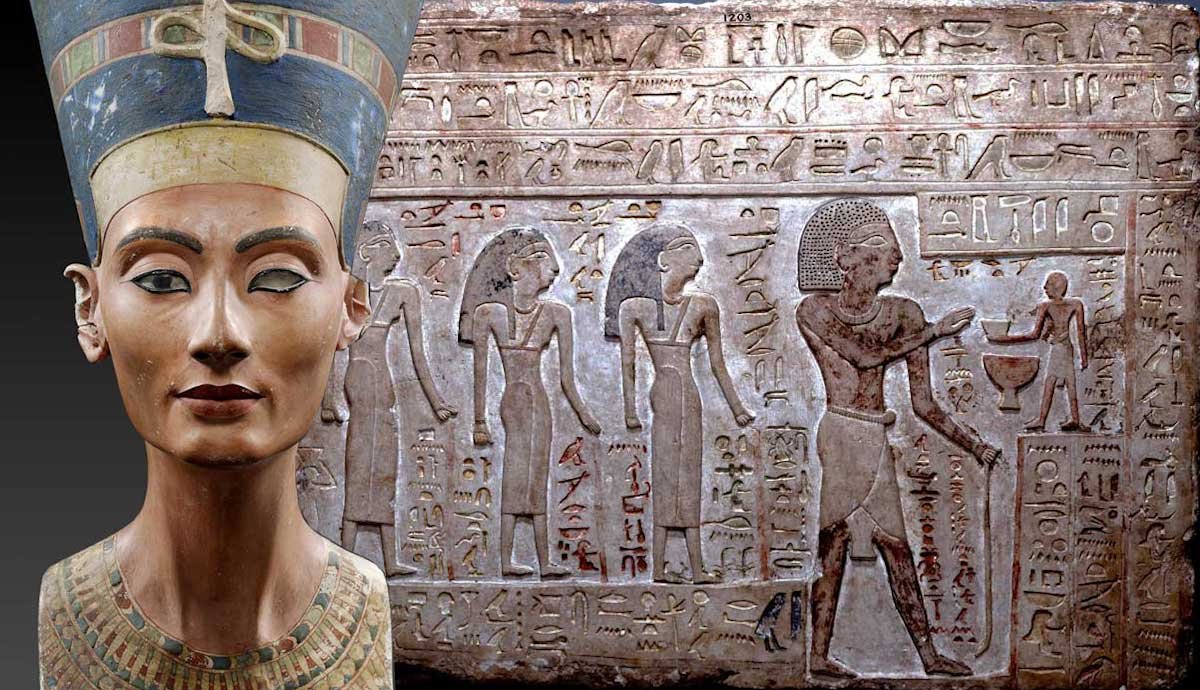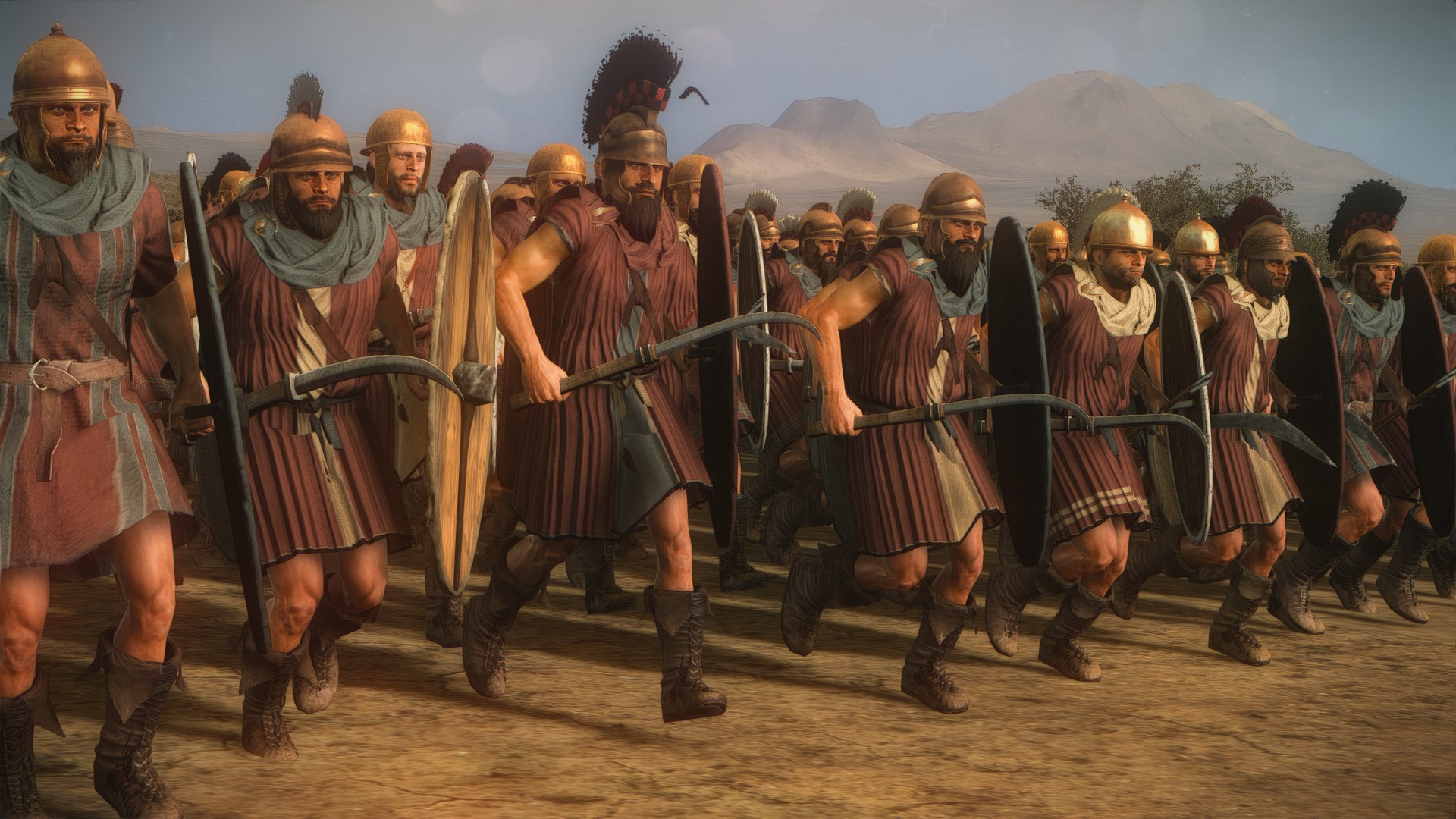Rise to Power
Background and Founding
The Ptolemaic Kingdom was a ancient Greek dynasty that ruled Egypt after the death of Alexander the Great in 323 BCE. The kingdom was founded by Ptolemy I Soter, one of Alexander’s most trusted generals and close friends.
Ptolemy I Soter was born around 367 BCE, likely in Macedon or Thessaly, to a noble family. He was a member of the ancient Macedonian aristocracy and had risen through the ranks due to his exceptional military skills and strategic thinking.
In 333 BCE, Ptolemy joined Alexander’s army as he marched towards Egypt, which was then under Persian rule. During the conquests of Persia, Ptolemy played a key role in several battles, including the siege of Tyre and the Battle of Gaza.
After Alexander’s death in 323 BCE, his empire was divided among his top generals, with Ptolemy receiving Egypt as his share. This decision marked the beginning of the Ptolemaic Kingdom, which would go on to become one of the most influential and enduring dynasties in ancient Egyptian history.
The new kingdom’s capital was Alexandria, a city founded by Alexander himself. The city was strategically located between two harbors and served as a major center of trade and commerce. Ptolemy I Soter ruled from 323 to 285 BCE and during his reign, he established the city’s infrastructure and laid the foundation for its growth into one of the greatest cities in the ancient world.
One of the key factors that contributed to the Ptolemaic Kingdom’s success was its unique blend of Greek and Egyptian cultures. While Ptolemies were Macedonian Greeks, they adopted many Egyptian customs and traditions, which helped them integrate with the local population. This fusion of cultures led to significant advances in science, philosophy, art, architecture, and literature.
During their reign, the Ptolemies built magnificent temples and monuments that showcased their wealth and power. The most famous example is the Great Library of Alexandria, which was one of the largest libraries in the ancient world. This intellectual hub attracted scholars from all over the Mediterranean and played a significant role in advancing knowledge and understanding.
The Ptolemaic Kingdom continued to thrive for several centuries under the rule of various pharaohs, including Ptolemy II Philadelphus, who expanded the kingdom’s borders through military conquests. However, by the 1st century BCE, the kingdom was in decline due to internal conflicts and external pressures from Rome.
The final blow came when Julius Caesar arrived in Egypt during his civil war against Pompey. The Ptolemies were eventually overthrown by the Romans, marking the end of the Ptolemaic Kingdom and the beginning of a new era under Roman rule. Nevertheless, the legacy of the Ptolemaic dynasty continued to influence art, culture, and politics for centuries after its demise.
The Ptolemaic Kingdom was founded by Ptolemy I Soter, one of Alexander the Great’s generals, after his death in 323 BCE.
The Ptolemaic Kingdom was a Greek dynasty that ruled over Egypt after the conquest by Alexander the Great. It was founded by Ptolemy I Soter, one of Alexander’s closest friends and generals, who declared himself king in 323 BCE, following Alexander’s death.
Ptolemy I Soter had been appointed as the satrap (governor) of Egypt by Alexander during his lifetime, and he had played a crucial role in maintaining order in the province. After Alexander’s death, Ptolemy saw an opportunity to establish himself as the ruler of Egypt and seized power.
The Ptolemaic Kingdom was established with its capital in Alexandria, which became one of the most important centers of culture and learning in the ancient world. The city was founded by Alexander on a strategic site near the Mediterranean Sea and was designed to be a Greek colony that would spread Hellenistic culture throughout Egypt.
Under Ptolemy I Soter’s leadership, Egypt experienced a period of relative peace and prosperity. He established trade relationships with other cities in Greece and beyond, and he also sponsored the construction of temples, roads, and public buildings.
Ptolemy I Soter’s descendants continued to rule Egypt for nearly three centuries, producing some notable rulers such as Ptolemy II Philadelphus and Cleopatra VII. The Ptolemaic Kingdom was known for its cultural achievements, including the development of Greek language and literature in Egypt, as well as significant scientific discoveries and architectural innovations.
However, the Ptolemaic Kingdom eventually declined due to internal conflicts, external threats from other Hellenistic kingdoms, and economic troubles. The kingdom came under Roman rule after a long period of civil war between the rival claims of Cleopatra VII’s children.
In summary, the Ptolemaic Kingdom was an important Greek dynasty that played a significant role in shaping Egypt’s history and culture during the Hellenistic period. Founded by Ptolemy I Soter after Alexander’s death, it produced many notable rulers who contributed to the development of science, literature, and architecture.
Politics and Governance
Dynastic Succession
The Ptolemaic Kingdom, which ruled ancient Egypt from 323 BCE to 30 BCE, practiced a unique system of Dynastic Succession. This system allowed the rulers to maintain power within their family by marrying with relatives and producing children who could inherit the throne.
The practice of sibling marriage was widespread in the Ptolemaic dynasty, which aimed at preserving the royal bloodline and maintaining control over Egypt’s wealth and power. This tradition, however, led to a lack of legitimate male heirs, as many rulers had children with relatives or close family members.
One notable example is Ptolemy II Philadelphus, who married his full sister Arsinoe II in a bid to strengthen the dynasty’s hold on power. Their union produced two daughters: Berenice and Arsinoe, both of whom were considered suitable heirs.
However, due to the absence of male heirs from Ptolemy II’s marriage, the throne was passed down through other members of the royal family or through alliances with foreign powers. This led to a series of civil wars and power struggles within the dynasty as different claimants vied for control over Egypt.
Despite these challenges, the Ptolemaic Kingdom managed to endure for several centuries under various rulers who implemented innovative policies, invested in infrastructure, and maintained diplomatic relations with other ancient civilizations. The legacy of Ptolemaic Egypt can still be seen today through its extensive cultural heritage, architectural achievements, and archaeological remnants.
The Ptolemaic System of succession was eventually brought to an end with the rise of Cleopatra VII, who married her brother Mark Antony in a final attempt to save the dynasty. The tragic end of their union marked the beginning of the end for Ptolemaic Egypt, which ultimately fell under Roman rule after Cleopatra’s death in 30 BCE.
The Ptolemaic dynasty consisted of 13 rulers, with each succeeding the previous one in a system of monarchical governance.
The Ptolemaic dynasty was a Greek royal house that ruled Ancient Egypt after the death of Alexander the Great, who had conquered Egypt in 332 BCE. The dynasty consisted of 13 rulers, with each succeeding the previous one in a system of monarchical governance.
Here are some key features and characteristics of the Ptolemaic dynasty:
Ptolemy I Soter (323-285 BCE)
The first ruler of the Ptolemaic dynasty, Ptolemy was one of Alexander’s top generals and a trusted advisor. He founded the city of Alexandria and established it as the capital of Egypt.
Ptolemy II Philadelphus (285-246 BCE)
The second ruler of the Ptolemaic dynasty, Ptolemy II expanded Egyptian trade and commerce, establishing new cities and promoting agriculture. He also supported the development of arts and culture.
Ptolemy III Euergetes (246-221 BCE)
The third ruler of the Ptolemaic dynasty, Ptolemy III expanded Egyptian territory through military campaigns in Asia and Africa. He also established new administrative systems and promoted trade.
Ptolemy IV Philopator (221-205 BCE)
The fourth ruler of the Ptolemaic dynasty, Ptolemy IV faced a series of challenges, including internal power struggles and external threats from neighboring kingdoms. He also promoted the development of arts and culture.
Ptolemy V Ephebos (205-180 BCE)
The fifth ruler of the Ptolemaic dynasty, Ptolemy V faced significant challenges, including a series of wars with other ancient kingdoms. He also established new administrative systems and promoted trade.
Ptolemy VI Philometor (180-145 BCE)
The sixth ruler of the Ptolemaic dynasty, Ptolemy VI faced significant challenges, including internal power struggles and external threats from neighboring kingdoms. He also established new administrative systems and promoted trade.
Ptolemy VII Neos Philopator (145-144 BCE)
The seventh ruler of the Ptolemaic dynasty, Ptolemy VII faced significant challenges, including internal power struggles and external threats from neighboring kingdoms. He also established new administrative systems and promoted trade.
Ptolemy VIII Physcon (145-116 BCE)
The eighth ruler of the Ptolemaic dynasty, Ptolemy VIII faced significant challenges, including internal power struggles and external threats from neighboring kingdoms. He also established new administrative systems and promoted trade.
Ptolemy IX Soter II (116-107 BCE)
The ninth ruler of the Ptolemaic dynasty, Ptolemy IX faced significant challenges, including internal power struggles and external threats from neighboring kingdoms. He also established new administrative systems and promoted trade.
Ptolemy X Alexander I (107-88 BCE)
The tenth ruler of the Ptolemaic dynasty, Ptolemy X faced significant challenges, including internal power struggles and external threats from neighboring kingdoms. He also established new administrative systems and promoted trade.
Ptolemy XI Alexander II (80-80 BCE)
The eleventh ruler of the Ptolemaic dynasty, Ptolemy XI faced significant challenges, including internal power struggles and external threats from neighboring kingdoms. He also established new administrative systems and promoted trade.
Ptolemy XII Auletes (80-51 BCE)
The twelfth ruler of the Ptolemaic dynasty, Ptolemy XII faced significant challenges, including internal power struggles and external threats from neighboring kingdoms. He also established new administrative systems and promoted trade.
Ptolemy XIII Theos Philopator (51-47 BCE)
The thirteenth and final ruler of the Ptolemaic dynasty, Ptolemy XIII faced significant challenges, including internal power struggles and external threats from neighboring kingdoms. He also established new administrative systems and promoted trade.
Overall, the Ptolemaic dynasty played a significant role in shaping ancient Egyptian history, culture, and politics. The dynasty’s 13 rulers each contributed to the development of Egypt in their own unique ways, leaving behind a lasting legacy that continues to be studied by historians and scholars today.
Military and Conquest
Campaigns against Nubia and Ethiopia
The Ptolemaic Kingdom, which was a Hellenistic state that succeeded the ancient Egyptian Empire, faced various campaigns against Nubia and Ethiopia during its reign.
The earliest recorded campaign against Nubia was conducted by Ptolemy II Philadelphus (285-246 BCE) in 261 BCE, who launched a successful military expedition into Nubia, capturing several key cities including Syracuse and Ras Haneish.
This campaign marked the beginning of Ptolemaic intervention in Nubia, which aimed at asserting Egyptian control over the region. However, the Egyptians did not manage to establish a stable presence in Nubia during this period.
Despite several subsequent campaigns, the Ptolemies were unable to secure lasting control over Nubia. One of the main reasons for their failure was the strong military power of the Kingdom of Kush, which had its capital at Napata and Meroe.
Key Campaigns Against Nubia:
- Ptolemy II Philadelphus’ campaign (261 BCE): A successful expedition that captured key cities in Nubia.
Adiabene’s campaign (240-230 BCE): A brief period of Nubian control over Egypt, with the Kushites being repelled by Adiabene.
Campaigns Against Ethiopia:
- Ptolemy II Philadelphus’ expedition to Ethiopia (250 BCE): A military expedition sent by Ptolemy II that reached as far south as modern-day Sudan.
Egyptian-Nubian war (160-150 BCE): A series of conflicts between the Ptolemies and Nubia, resulting in Egyptian control over Lower Egypt.
Important Figures:
- Ptolemy II Philadelphus: The ruler who launched several successful campaigns against Nubia.
Adiabene’s King: A ruler of Adiabene who played a significant role in the region during the Ptolemaic period.
Conclusion:
- The Ptolemies’ repeated efforts to secure control over Nubia and Ethiopia were ultimately unsuccessful, due to their inability to establish a stable presence and the strength of local opposition.
Ptolemy II Philadelphus led campaigns against Nubia and Ethiopia, expanding Ptolemaic control over the regions.
Ptolemy II Philadelphus was a powerful ruler who led several successful military campaigns against Nubia and Ethiopia, expanding Ptolemaic control over these regions. These campaigns were aimed at securing Egypt’s borders, increasing trade, and establishing a strong presence in the Mediterranean region.
Some of the key highlights of Ptolemy II Philadelphus’ campaigns against Nubia include:
- Expansion of Egyptian control: The Ptolemaic Kingdom expanded its control over parts of Nubia, which was then known as Kush. This expansion was achieved through a series of military campaigns led by Ptolemy II Philadelphus.
- Economic gains: The conquests brought significant economic benefits to Egypt, including increased trade and the acquisition of valuable resources such as gold and ivory.
- Establishment of vassal states: The Ptolemaic Kingdom established vassal states in Nubia, which allowed them to maintain control over these regions without having to station large numbers of troops there.
In Ethiopia, Ptolemy II Philadelphus also led campaigns that expanded Ptolemaic control. Some of the key highlights include:
- Conquest of Aksum: The Ptolemaic Kingdom conquered the Kingdom of Aksum in present-day Ethiopia, which was a major power at that time.
- Establishment of trade routes: The conquests established new trade routes between Egypt and Ethiopia, allowing for the exchange of goods such as spices, precious stones, and metals.
- Spread of Greek culture: As with other Ptolemaic conquests, there was a significant spread of Greek culture in Ethiopia, including the adoption of Greek language, architecture, and art.
In summary, the campaigns led by Ptolemy II Philadelphus against Nubia and Ethiopia were successful in expanding Ptolemaic control over these regions. These conquests brought significant economic benefits to Egypt, established new trade routes, and spread Greek culture throughout the region.
Culture and Society
Ptolemaic Architecture and Art
The Ptolemaic Kingdom, which lasted from 323 to 30 BCE, was a Hellenistic state that emerged after the death of Alexander the Great. During this period, architecture and art flourished in Egypt under Greek rule.
Ptolemaic Architecture was heavily influenced by ancient Egyptian traditions as well as Greek styles. The Ptolemies built monumental structures that reflected their power and prestige, while also incorporating Egyptian motifs and techniques. One notable example is the Egyptian temple, which featured a combination of Greek and Egyptian architectural elements.
The most iconic example of Ptolemaic architecture is the Temple of Horus at Edfu, built during the reign of Ptolemy III (246-221 BCE). This temple, dedicated to the falcon god Horus, showcases a blend of Greek and Egyptian architectural styles. The temple’s design features a combination of columns, arches, and pyramidal structures, reflecting both Greek and Egyptian influences.
Another significant example is the Museion at Alexandria, founded by Ptolemy I (323-285 BCE). This library and museum served as a center for learning and intellectual pursuits, housing vast collections of scrolls and art from around the Mediterranean. The Museion’s design reflected Greek architectural styles, with columns and statues adorning its façade.
Ptolemaic Art was characterized by an eclecticism that blended Greek and Egyptian styles. Artists drew inspiration from a wide range of sources, including mythology, history, and everyday life. A notable example is the Royal Tomb at Taposiris Magna, built during the reign of Ptolemy II (285-246 BCE). The tomb’s decorations feature intricate reliefs depicting various scenes, showcasing a mix of Greek and Egyptian art forms.
One of the most famous examples of Ptolemaic art is the Alexandrian mummy portraits, which date back to the 2nd century BCE. These vividly painted images on wooden coffins showcase the individual characteristics and social status of the deceased, reflecting both Greek and Egyptian artistic traditions.
In summary, Ptolemaic architecture and art were characterized by a distinctive blend of Greek and Egyptian styles, reflecting the cultural exchange that occurred during this period. The Ptolemies’ emphasis on monumental structures and decorative arts created a rich legacy that influenced subsequent artistic developments in the ancient world.
The Ptolemies promoted a unique blend of Greek and Egyptian architectural styles, as seen in structures like the Great Library of Alexandria.
The Ptolemaic Kingdom, which lasted from 323 BCE to 30 BCE, was a period of significant cultural and architectural exchange between the Greeks and Egyptians. This unique blend of styles can be seen in numerous structures built during this time, including the Great Library of Alexandria.
One of the most striking features of Ptolemaic architecture is the combination of Greek orders with Egyptian motifs. The Greeks had developed a system of architectural orders, which included the Doric, Ionic, and Corinthian styles, characterized by columns of different proportions and ornamentation. In contrast, ancient Egyptian architecture was marked by grandiose scale, symmetrical composition, and an emphasis on flat planes.
The Great Library of Alexandria is a prime example of this blend of styles. The library’s exterior design features a Greek Doric façade with six columns, which gives way to an imposing stone structure that echoes the monumental architecture of ancient Egypt. The building’s massive size and symmetry were characteristic of Egyptian architecture, while its use of columns and pediment was typical of Greek buildings.
Another notable example of Ptolemaic architectural style is the temple of Taposiris Magna at Aboukir in Egypt. This magnificent structure boasts a unique blend of Greek and Egyptian elements, with an imposing Greek-style colonnaded façade giving way to a large, stepped pyramid. The temple’s use of columns, pediments, and other classical motifs was typical of Greek architecture, while its massive size and pyramidal shape reflected the grandeur of Egyptian temples.
Other notable examples of Ptolemaic architectural style include the temple of Isis at Philae in Egypt and the Serapeum at Alexandria. The Serapeum is particularly interesting because it represents a fusion of Greek and Egyptian styles, with a large stone building featuring a Greek-style colonnaded façade giving way to an inner sanctum with an imposing Egyptian-style statue.
Overall, the Ptolemaic Kingdom’s architectural style reflected the cultural exchange between Greece and Egypt during this period. The blending of Greek orders with Egyptian motifs resulted in buildings that were both monumental and harmonious, reflecting the power and grandeur of a civilization that was truly unique in its time.
- Austin, Texas - September 4, 2024
- Country Flags With Stars - September 4, 2024
- 7 Oldest Cities In The United States - September 4, 2024





